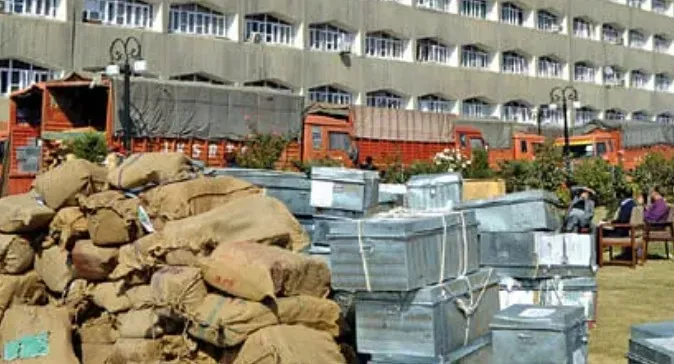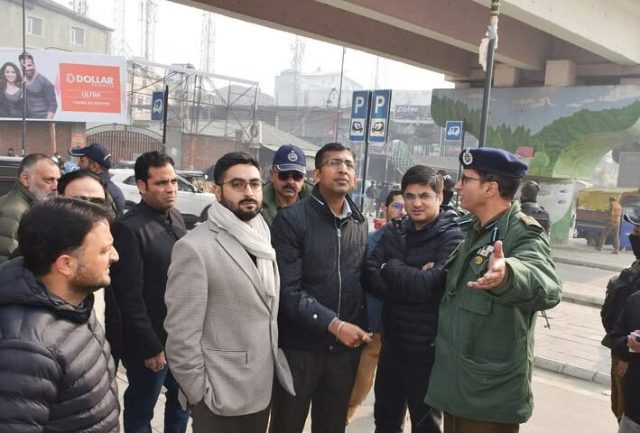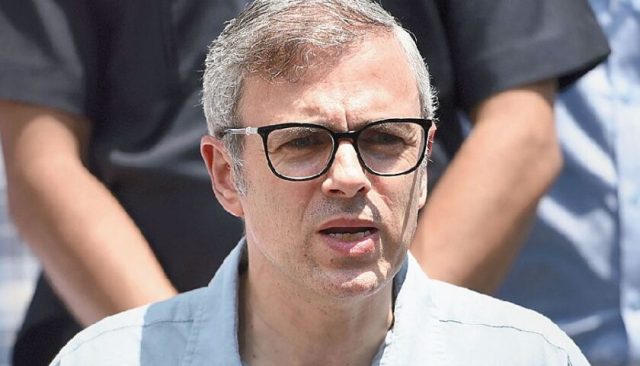A 19th-Century Tradition Reborn — A Step Toward Restoring Identity and Balance
By: Javid Amin | 16 October 2025
In a landmark decision that blends history, symbolism, and politics, Chief Minister Omar Abdullah has officially announced the revival of the Darbar Move, the 147-year-old biannual tradition of shifting the seat of government between Jammu and Srinagar.
The decision, approved by the Jammu and Kashmir Cabinet in September 2025 and signed off by the Lieutenant Governor, restores one of the most distinctive administrative customs in India — one that was discontinued in 2021 under the Lieutenant Governor Manoj Sinha’s administration.
What Is the Darbar Move?
The Darbar Move dates back to 1872, when Maharaja Gulab Singh and later Maharaja Ranbir Singh institutionalized a unique seasonal migration of the royal court and administration:
-
Winter Capital: Jammu
-
Summer Capital: Srinagar
The logic was simple yet profound: to ensure administrative accessibility, equitable development, and emotional integration of the two culturally distinct regions of Jammu and Kashmir.
Each year, files, departments, and officials would physically shift between the twin capitals. The move ensured that both regions received direct governance attention and economic activity.
Why Was It Discontinued in 2021?
In 2021, the then-administration under LG Manoj Sinha officially ended the Darbar Move, citing cost inefficiency, administrative delays, and logistical burden.
The government estimated that the biannual shifting cost the exchequer over ₹200 crore annually, involving thousands of employees, hundreds of trucks, and weeks of disruption.
Digital record systems and e-office infrastructure were introduced as a justification for permanently settling secretariat functions in one place, effectively freezing the centuries-old practice.
For many locals, however, the halt was not merely administrative — it was symbolic of diminishing heritage and dual identity.
The Revival: A Promise Fulfilled
Chief Minister Omar Abdullah, in his public address, stated that the restoration of the Darbar Move was a key pledge in the 2024 National Conference manifesto, framed under the vision of “Dignity, Identity, and Development.”
“Why was this Darbar Move discontinued? This was an old tradition that bound Jammu and Kashmir together. The cabinet decided to restore the Darbar Move, and the Lieutenant Governor has signed the file.”
— Omar Abdullah, Chief Minister, J&K
According to official sources, the first revived Darbar Move will take place in November 2025, with key departments relocating to Jammu for the winter session.
The move, officials said, will be conducted “in a modernized, cost-effective way,” using digitized records, limited staff rotation, and efficient logistics management to avoid the inefficiencies of the past.
Symbolism and Cultural Impact
Beyond the bureaucracy, the Darbar Move carries a deep emotional and cultural significance for Jammu and Kashmir.
-
It reflects the seasonal rhythm of the region — when the summer capital in Srinagar gives way to winter life in Jammu.
-
It embodies the unity of diversity, balancing Kashmir’s valley and Jammu’s plains in a single administrative heartbeat.
-
It sustains local economies — hospitality, transport, trade, and services — that traditionally thrived around the biannual transitions.
Reviving it is thus not merely a governance gesture but a statement of continuity, asserting that traditions rooted in inclusivity still have value in a modern state.
Political and Public Reactions
The announcement has sparked mixed reactions across political and civil circles.
-
Supporters hail it as a “revival of lost glory”, aligning with NC’s larger campaign to reclaim identity and heritage eroded after 2019.
-
Critics call it retrograde, arguing that the move revives an outdated practice instead of focusing on service delivery, job creation, or infrastructure.
An editorial in Greater Kashmir called the decision “symbolic but emotionally resonant,” noting that “tradition and efficiency must coexist, not compete.”
In contrast, opposition leaders from the People’s Conference and Apni Party termed the decision “political theatre at the taxpayers’ cost.”
Economic and Administrative Implications
Experts note that while the revival will restore traditional rhythms of governance, the financial prudence and digital management of the move will be closely watched.
Economically, the return of Darbar Move means:
-
Seasonal boost for transporters, hoteliers, and vendors in both cities.
-
Increase in local employment and short-term contracts linked to logistics and hospitality.
-
Revitalization of winter tourism in Jammu and summer tourism in Srinagar due to official presence.
Administratively, the government plans to:
-
Digitize 80% of records to reduce physical transfer loads.
-
Use hybrid work systems to keep essential services active in both regions.
-
Limit department relocations to key secretariat wings, minimizing redundancy.
Officials argue that this “modernized Darbar Move” can strike a balance between tradition and technology.
A Step Toward Restoring Identity
For the Omar Abdullah administration, the revival of the Darbar Move is part of a broader effort to “reclaim the lost symbols of Jammu and Kashmir’s statehood.”
After one year in office — and amid criticism for slow progress on major manifesto promises — this decision marks the second concrete fulfilment after the revival of the 69th National School Games.
Political analysts see it as a strategic morale booster, meant to reaffirm NC’s narrative of heritage restoration and regional parity ahead of upcoming municipal elections.
“This is more than a file move — it’s an assertion that we are reclaiming what is ours,” said an NC insider.
“The Darbar Move is part of who we are, not just where we govern.”
Balancing Tradition and Modernity
The question now is whether the Omar government can sustain this revival in a fiscally responsible and administratively efficient way.
Can the Darbar Move coexist with e-governance, digital records, and real-time service delivery?
Can symbolism translate into substance — or will nostalgia outweigh necessity?
These are the questions that will define whether this revival becomes a meaningful renaissance or a costly ritual.
Bottom-Line: A Tradition Reclaims Its Place
After four years in abeyance, the Darbar Move once again bridges the Pir Panjal divide, reconnecting two regions through ritual and rhythm.
For Jammu, it means the hum of government life returning each winter.
For Srinagar, it means continuity and dignity each summer.
And for the people of J&K, it rekindles a sense of belonging — a reminder that history, when respectfully revived, can still serve as a foundation for identity and unity.




